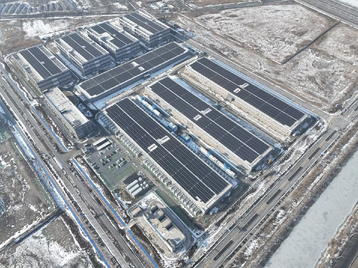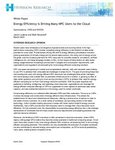Tencent has launched a new microgrid project at one of its data centers in China, which it says generates enough solar energy to power 6,000 households.
The Chinese tech giant this week officially launched the microgrid at its Tencent Tianjin High-Tech Cloud Data Center in China.
It says it has installed 10.54MW of solar panels, which will be capable of producing 12 million KWh of electricity annually. Tencent says this is enough energy to power 6,000 houses. The microgrid is connected to the main electricity grid.
Solar power is difficult to harness for use directly in data centers because of fluctuations in supply, and Tencent says it has developed a three-pronged approach to mitigate potential problems.
Firstly, it has introduced filtering and suppression techniques at the Tianjin data center to make solar power more consistent and usable. It has installed equipment to store excess energy so that it can be used to provide backup power or in times of low supply, and is using an AI system to manage the energy demands of its facility.
“With the introduction of green energy sources such as solar and wind, managing and coordinating data centers has become more complex,” a Tencent statement said. “We need to monitor energy-source operations, forecast electricity needs based on weather and usage, and even offer energy-saving recommendations.
“That's why we've developed an AI- and machine-learning-enabled control system in Tianjin, allowing us to process data from multiple energy sources and predict future electricity demand and generation. It's like a cockpit for managing electricity in the data center, removing the guesswork.”
Tencent opened the 90,000 sqm (968,750 sq ft) Tianjin data center in 2013.
The company, which says it will become carbon neutral by 2030, claims renewable energy accounts for 54 percent of annual electricity consumption in its data centers, with more than 70 percent of its self-built campuses using green power.
Tencent said its self-installed new energy capacity in 2023 surpassed 32MW, doubling 2022's figure and taking total installed capacity to more than 50MW.







